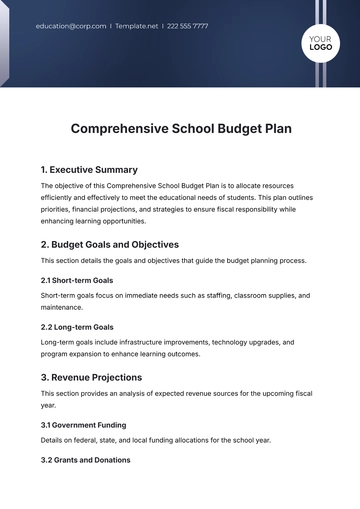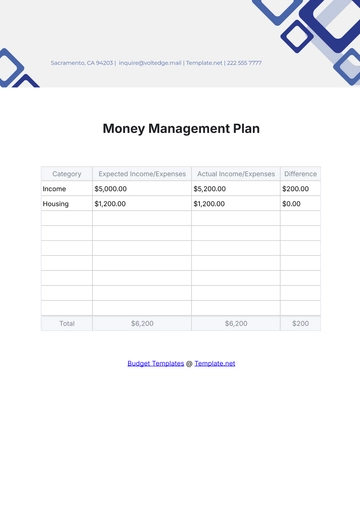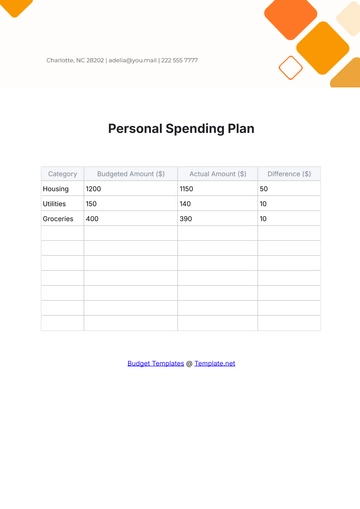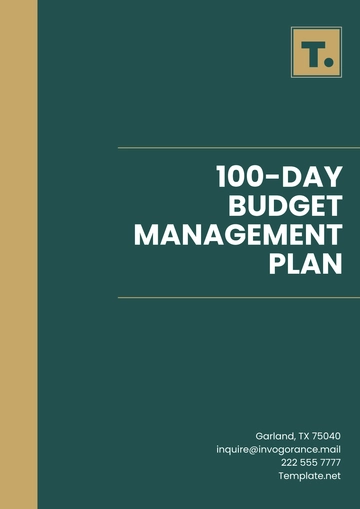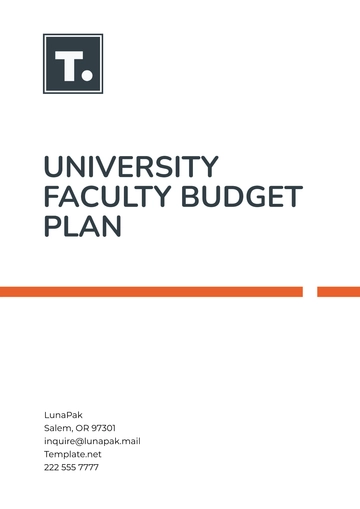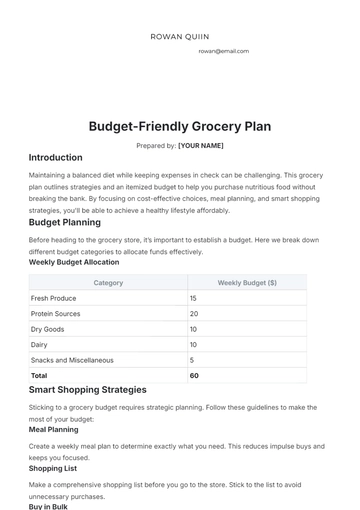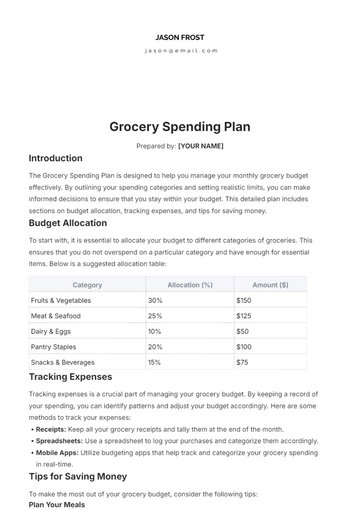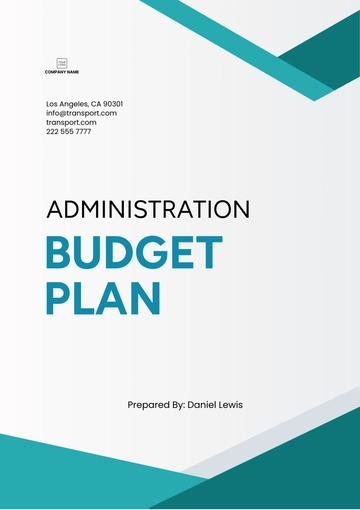Household Financial Plan
Written by: [Your Name]
Date: [Date]
I. Introduction
Welcome to the Household Financial Plan created for [Family Name]. This comprehensive plan outlines the strategies and resources to manage your family's finances effectively, helping you achieve your financial goals and secure your future.
II. Financial Goals
Setting clear financial goals is the foundation of this plan. Here are the objectives we aim to achieve by 2055:
Build an emergency fund of at least $20,000.
Pay off all outstanding debts, including Credit Card Debt, Student Loans, and Mortgages, by 2050.
Save for Education, Vacation, and Retirement.
Invest in Stocks, Bonds, Real Estate, and Retirement Accounts to grow wealth over time.
III. Income Analysis
Understanding your sources of income is crucial for financial planning. Here's an analysis of your family's income:
Monthly Income: $6,500
Sources of Income:
Salary/Wages: $5,000
Investments: $1,000
Other: $500
IV. Expense Tracking
Managing expenses efficiently is key to achieving financial stability. Here's a breakdown of your family's expenses:
Monthly Expenses: $4,500
Categories of Expenses:
Housing: $1,500
Utilities: $200
Transportation: $300
Groceries: $600
Entertainment: $300
Other: $1,600
V. Budget Allocation
Allocating your income wisely ensures that you meet your financial goals. Here's a budget allocation plan:
Budget Categories:
Housing: 30%
Savings: 20%
Debt Repayment: 10%
Other Expenses: 40%
VI. Savings Plan
Saving for the future is essential for financial security. Here's a plan to grow your savings:
Emergency Fund: $20,000
Retirement Savings: $500,000
Education Fund: $50,000
Other Savings Goals: $30,000
VII. Debt Management Strategy
Paying off debts efficiently will free up resources for other financial goals. Here's a debt management strategy:
Outstanding Debts:
Credit Card Debt: $5,000
Student Loans: $20,000
Mortgage: $150,000
Debt Repayment Plan:
Credit Card Debt: Aggressive repayment with $500/month
Student Loans: Gradual repayment with $200/month
Mortgage: Regular repayment with $1,000/month
VIII. Investment Strategy
Investing intelligently can help you achieve long-term financial growth. Here's an investment strategy tailored to your needs:
Types of Investments:
Stocks: 40%
Bonds: 20%
Real Estate: 20%
Retirement Accounts: 20%
IX. Financial Projections
Forecasting your financial future helps you track progress toward your goals. Here are the projections for 2055:
Category | Amount |
|---|
Income | $80,000 |
Expenses | $54,000 |
Savings | $100,000 |
Investments | $150,000 |
Net Worth | $500,000 |
X. SWOT Analysis
Understanding your family's strengths, weaknesses, opportunities, and threats is crucial for effective financial planning. Here's a SWOT analysis:
Strengths | Weaknesses | Opportunities | Threats |
|---|
Strong Income Sources | High Debt Burden | Potential for Investment Growth | Economic Downturn |
Diverse Investment Portfolio | Limited Emergency Fund | Education and Career Advancement | Inflation Risk |
Good Budgeting Habits | Variable Income Streams | Housing Market Opportunities | Job Loss |
Plan Templates @ Template.net


